 Animals
Animals  Animals
Animals  History
History 10 Most Influential Protests in Modern History
 Creepy
Creepy 10 More Representations of Death from Myth, Legend, and Folktale
 Technology
Technology 10 Scientific Breakthroughs of 2025 That’ll Change Everything
 Our World
Our World 10 Ways Icelandic Culture Makes Other Countries Look Boring
 Misconceptions
Misconceptions 10 Common Misconceptions About the Victorian Era
 Mysteries
Mysteries 10 Strange Unexplained Mysteries of 2025
 Miscellaneous
Miscellaneous 10 of History’s Most Bell-Ringing Finishing Moves
 History
History 10 Great Escapes That Ended Right Back in Captivity
 Weird Stuff
Weird Stuff 10 Fascinating Things You Might Not Know About Spiders
 Animals
Animals 10 Animals That Humiliated and Harmed Historical Leaders
 History
History 10 Most Influential Protests in Modern History
 Creepy
Creepy 10 More Representations of Death from Myth, Legend, and Folktale
Who's Behind Listverse?

Jamie Frater
Head Editor
Jamie founded Listverse due to an insatiable desire to share fascinating, obscure, and bizarre facts. He has been a guest speaker on numerous national radio and television stations and is a five time published author.
More About Us Technology
Technology 10 Scientific Breakthroughs of 2025 That’ll Change Everything
 Our World
Our World 10 Ways Icelandic Culture Makes Other Countries Look Boring
 Misconceptions
Misconceptions 10 Common Misconceptions About the Victorian Era
 Mysteries
Mysteries 10 Strange Unexplained Mysteries of 2025
 Miscellaneous
Miscellaneous 10 of History’s Most Bell-Ringing Finishing Moves
 History
History 10 Great Escapes That Ended Right Back in Captivity
 Weird Stuff
Weird Stuff 10 Fascinating Things You Might Not Know About Spiders
10 Amazing Ancient Discoveries Preserved In Amber
Amber is a remarkable substance—the fossilized remains of plant-produced resin, ranging from yellow to brown in color and yielding a beautiful translucent or transparent glowing gold when polished. Because of this, many ancient cultures associated it with the Sun or believed it had supernatural attributes. Nowadays, amber is especially valuable to scientists, because anything caught in it before it dries is often preserved in microscopic detail. Even soft tissue can be preserved, helping us reconstruct life from millions of years ago. Over 1,000 extinct insect species alone have been cataloged thanks to the substance.
10An Ant With A Parasite Still Stuck To Its Head
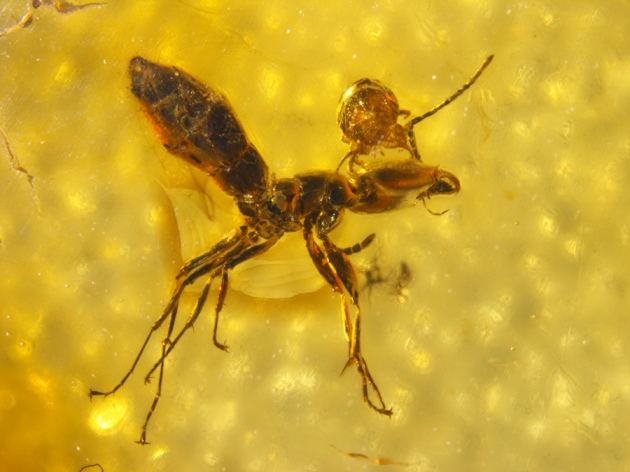
Somewhere in what is now the Baltic region, around 44–49 million years ago, an ant was parasitized by a species of mite and then wandered into a pool of resin, preserving both forever. They ended up in the hands of a German amateur amber collector named Jorg Wunderlich, who passed the chunk of amber on to Jason Dunlop, an arachnologist at the Leibniz Institute for Evolution and Biodiversity Science in Berlin. Amazingly, the find is one of two known examples of fossilized mites preserved while actually attached to their host.
The mite, identified by Dunlop as belonging to the genus Myrmozercon, sits atop the ant’s head, where it would have been able to feed as needed. The mite probably also laid its eggs on the ant’s head, providing its young with transport to new hosts as the hapless ant moved through the colony. This behavior is similar to some mite species today, including those of the genus Varroa, a prime suspect in honeybee “colony collapse disorder.” While both creatures are remarkably well-preserved, an air bubble trapped between the two makes it hard to see some anatomical details, making it difficult to narrow down an exact species.
9A Spider Caught In the Act Of Attacking A Wasp
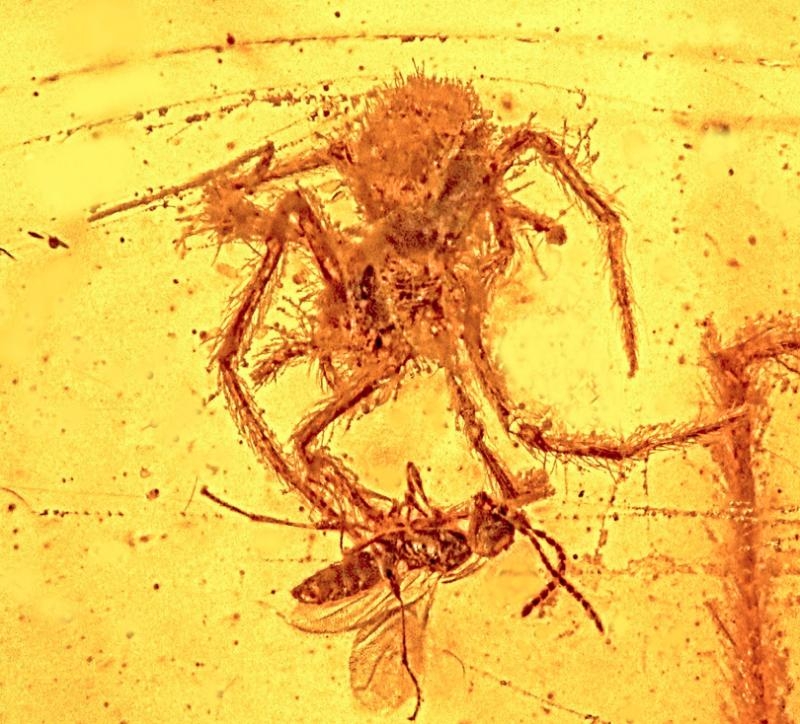
Over 100 million years ago, during the early Cretaceous period, a type of orb-weaver spider prepared to pounce on a male wasp that had become stuck in its web. Suddenly, a drop of resin fell from above, hitting the web just as the spider began its strike. The resin preserved the scene perfectly, leaving it frozen in time until 2012, when it was discovered by scientists in the Hukawng Valley of Myanmar. It is the only known case of a spider being preserved in the act of predation. George Poinar Jr., the zoologist who publicized the findings, remarked: “This was the wasp’s worst nightmare, and it never ended.”
The spider has been identified as a female social orb-weaver spider of the extinct genera, Geratonephila burmanica. An adult male spider of the same species was preserved sharing the same web, providing early evidence of spider social behavior. Around 15 unbroken strands of spiderweb were also preserved—an extremely rare event.
8The Earliest Spiderweb
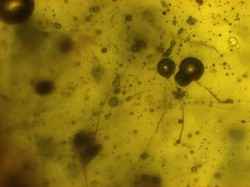
In fact, only a handful of dinosaur-era spiderwebs have ever been found. In addition to the previous entry, a 110-million-year-old web was discovered in Spain in 2006 and a 2003 find in Lebanon could be as old as 132 million years. But the world’s oldest known spiderweb was spun by an ancient ancestor of today’s orb-weaver spiders and preserved in amber roughly 140 million years ago.
The amber web was rediscovered on a beach in Sussex, England in 2009. Scientists were able to examine the web itself by slicing the amber into thin sections, which could be examined under high-powered microscopes. The results showed that ancient webs had many of the same characteristics as modern ones, including droplets of glue to hold the structure together and ensnare prey.
According to Oxford paleobiologist Martin Brasier, the early Cretaceous period saw a huge growth in the number of flying insects. In response, ancient spiders likely adapted earlier web structures to capture airborne food. Most experts agree that the earliest webs were probably used to line burrows, picking up vibrations from potential prey nearby.
7A Prehistoric Spider’s Blood
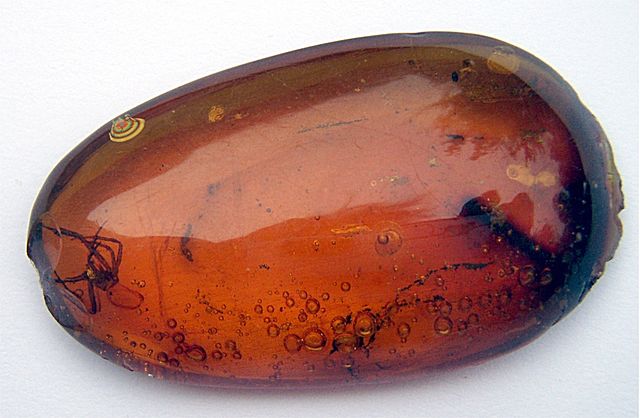
So an ancient spider preserved in amber is rare, but not exactly unique—but when that spider is found suspended along with droplets of its own blood, it’s enough to cause a scientific celebration.
Discovered in the Dominican Republic, the 20-million-year-old spider was accompanied by the first ancient blood drops (technically known as haemolymph) ever found. Naturally, comparisons were immediately made with Michael Crichton’s Jurassic Park, where dinosaurs were cloned from blood found within amber-preserved mosquitoes.
But while paleontologist David Penney conceded that it might be possible to extract DNA from the specimen, he said the find’s true value came from helping scientists piece together the origins of life in the Caribbean. Because the spider’s closest living relatives exist only in Brazil and Argentina, the discovery provides an important clue as to how the islands formed and were colonized by animal life.
Otherwise, the specimen is a perfect example of just how much scientists can learn from amber. According to Penney: “By analyzing the position of the spider’s body in relation to the droplets of blood in the amber we were able to determine how it died, which direction it was traveling, and even how fast it was moving.” We now know that the spider was climbing a tree when it was struck head-on by resin (rather than wandering into the resin and becoming stuck). The shape and position of the blood even revealed which of the spider’s legs broke first.
6The Oldest Arthropods Known To Science
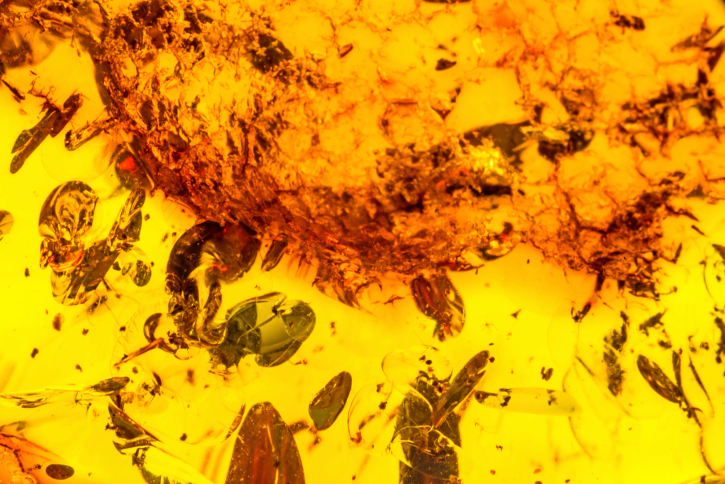
In 2012, scientists announced the discovery of a fly and two species of mite preserved in millimeter-sized droplets of amber from northeastern Italy. The specimens are around 230 million years old—100 million years older than any previously recorded.
The mites have been identified as two previously unknown species, Triasacarus fedelei and Ampezzoa triassica, and are distantly related to modern gall mites. David Grimaldi, a curator in the American Museum of Natural History’s Division of Invertebrate Zoology, revealed he was surprised by how much his discovery resembled modern mites: “You would think that by going back to the Triassic you’d find a transitional form of gall mite, but no, even 230 million years ago, all of the distinguishing features of this family were there—a long, segmented body; only two pairs of legs instead of the usual four found in mites; unique feather claws; and mouthparts.”
The fly, unfortunately, couldn’t be identified, since only its antennae were well-preserved. Still, its presence alone has led scientists to hope for further such discoveries down the road.
5A Tick Carrying An Early Version Of Lyme Disease
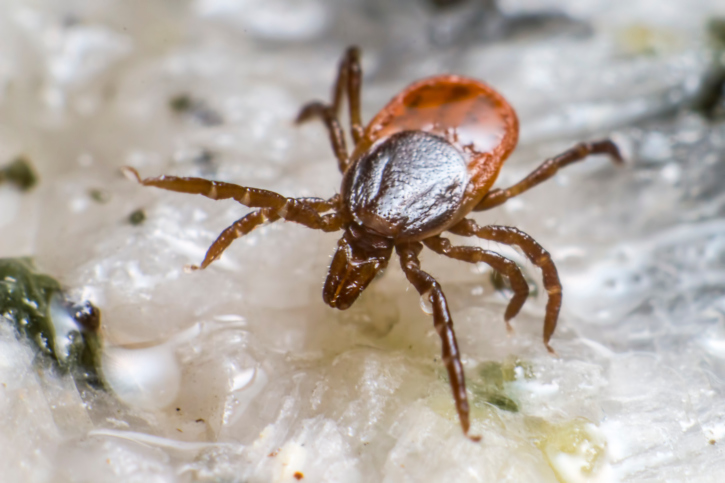
Lyme disease is making a comeback in the US, with reports that ticks carrying Lyme disease bacteria (Borrelia burgdorferi) are increasing their range westward. On the upside, we recently gained a new and unexpected source of information about the bacteria—and it was found preserved in amber.
Because amber preserves soft-body tissue, scientists can collect evidence of microscopic agents, including bacteria found preserved within the bodies of larger organisms. In 2014, Oregon State University researchers working on amber samples from the Dominican Republic discovered ancient ticks infected with bacteria remarkably similar to modern Borrelia.
The ticks were found in amber dating back 15–20 million years and indicate that even our early ancestors probably had to deal with conditions similar to Lyme disease. In a separate report examining bacteria found in amber, researchers concluded that the dinosaurs likely suffered from many of the same tick-borne illnesses as people. Not surprising, considering these bacteria have successfully infected mammals, birds, reptiles, and other animal species for millions of years.
4The Intermediate Pygmy Locust

One of the most important discoveries to come from the Dominican amber specimens was a new species of pygmy locust, dubbed Electrotettix attenboroughi after Sir David Attenborough, the famed British naturalist and filmmaker.
The pygmy locust is about the size of a rose thorn and lived between 18–20 million years ago, in the Miocene era. Grasshoppers and locusts are rarely found in amber, but the discovery is remarkable because it demonstrates a clear intermediate form in the evolution of its subfamily. The most ancient pygmy locusts had wings, while modern examples do not. Electrotettix attenboroughi has what appear to be vestigial hind wings—remnant structures like the human tailbone or the leg and foot bones found in the ancestors of modern whales. The fossil represents a remarkable witness to the loss of a major appendage in a whole subfamily of organisms.
The discovery was made by University of Illinois paleontologist Sam Heads, lab technician Jared Thomas, and study co-author Yinan Wang.
3Early Insect Camouflage
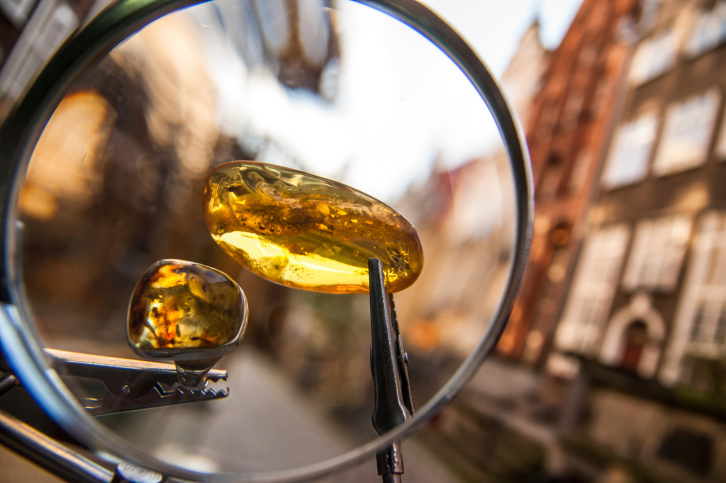
In 2012, researchers from the University of Barcelona reported the discovery of a 110-million-year-old fossilized insect encased in Spanish amber. The find is the earliest evidence for insect camouflage ever recorded.
The insect is the larval form of a new genus and species, dubbed Hallucinochrysa diogenesi, and is a very distant relative of modern green lacewings. Like modern lacewing larva, the fossilized insect appears to have surrounded itself with plant filaments attached to protrusions on its body; hiding its presence from would-be predators—a process known as trash collecting (or carrying) in modern insects. Because the larva would have needed to pick and choose the material to be used as camouflage, this provides evidence for complex intelligent behavior in early insects.
Previously, the oldest known evidence for this kind of behavior came from Dominican amber dating back around 49 million years. The new discovery reveals camouflage as a defensive behavior existed during the Cretaceous Period—and since the lacewing lineage goes back as far as the Jurassic Period, possibly much earlier.
2Ancient Feathers

In 2011, Ryan McKellar, a paleontologist at the University of Alberta in Canada, published the results of an extensive search through over 4,000 pieces of amber collected from Canadian museums. McKellar and his colleagues found 11 pieces of amber containing feathers, as well as a type of feather-like structure dubbed “dino-fuzz.” For example, one sample contained regularly spaced, hollow filaments about 16 micrometers across. McKeller believes these structures could be preserved protofeathers, because they resemble similar structures found in rock fossils. However, he cautioned that without any supporting evidence, it was entirely possible that the “fuzz” didn’t even come from a bird or dinosaur at all.
The oldest known bird is Archaeopteryx, which lived around 150 million years ago, while the oldest known feathered dinosaur is Anchiornis huxleyi, which likely flourished between 151–161 million years ago. Protofeathers, characterized by flexible, unbranched filaments, among other traits, are believed to represent an earlier state in the evolution of feathers. Interestingly, they have been found in creatures living after Archaeopteryx and Anchiornis huxleyi, but not before. Most of the amber McKeller studied came from late Cretaceous coal deposits laid down around 78–79 million years ago.
1100-Million-Year-Old Plant Sex
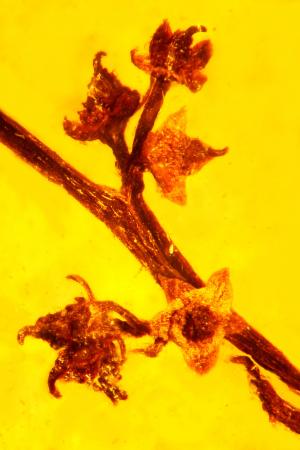
In 2014, researchers in the Hukawng Valley of Myanmar were studying a sprig containing 18 small, rose-like flowers encased in amber, when they realized one of the flowers had been preserved in the very act of reproduction.
The sprig was so perfectly preserved that photographs taken through a microscope actually revealed the pollen tubes of two pollen grains penetrating into a flower’s stigma (the receptive organ of the reproductive system), making it the oldest evidence of sexual reproduction in plants ever discovered. Additionally, the pollen itself appeared to be sticky, suggesting pollen had evolved to be carried by pollinating insects as far back as the Cretaceous.
The plant itself is an extinct species called Micropetasos burmensis, without any known modern relatives. It is made up of bunches of tiny flowers in various stages of growth, each one about a single millimeter wide. According to zoologist George Poinar, the find was significant since it showed that even when flowering plants were just beginning to appear, reproduction was already similar to modern-day plants.
Lance LeClaire is a freelance artist and writer. He writes on subjects ranging from science and skepticism, atheism, and religious history and issues, to unexplained mysteries and historical oddities, among other subjects. You can look him up on Facebook, or keep an eye for his articles on Listverse.








